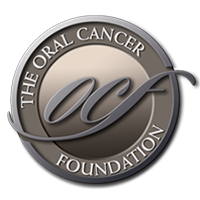 As the nation prepares to observe the 16th Oral Caner Awareness Month this April, the Academy of General Dentistry, the American Academy of Oral and Maxillofacial Pathology, the American Academy of Oral Medicine, the American Association of Oral and Maxillofacial Surgeons, the American Dental Association and the American Dental Hygienists' Association have joined the Oral Cancer Foundation in its campaign to raise awareness of this silent killer.
As the nation prepares to observe the 16th Oral Caner Awareness Month this April, the Academy of General Dentistry, the American Academy of Oral and Maxillofacial Pathology, the American Academy of Oral Medicine, the American Association of Oral and Maxillofacial Surgeons, the American Dental Association and the American Dental Hygienists' Association have joined the Oral Cancer Foundation in its campaign to raise awareness of this silent killer.
Be mindful of symptoms
The mouth is one of your body's most important early warning systems. Between dental visits, it is importance that you be aware of the following signs and symptoms, and see a dental professional if they do not improve or disappear after two to three weeks:
- A sore, or soreness or irritation that doesn't go away
- Red or white patches, or pain, tenderness, or numbness in mouth or lips
- Lumps, thickening tissues, rough spots, crusty or eroded areas
- Difficulty chewing, swallowing, speaking or moving your jaw or tongue
- A change in the way your teeth fit together when you close your mouth
Factors that may increase your risk of oral cancer
Research has identified a number of factors that may contribute to the development of oral cancer. Historically, those at an especially high risk have been heavy alcohol drinkers and smokers older than age 50, but today the cancer also is occurring more frequently in younger, non smoking people. The human papillomavirus 16 (HPV) is related to the increasing incidence of oropharyngeal cancer (most commonly involving tonsillar tissue, including the base of the tongue) in the younger population.
If you have never had an oral cancer examination, there is no better time to schedule one than during Oral Cancer Awareness Month in April! When you do, be sure to ask that this examination be made routine at all your future dental checkups.
